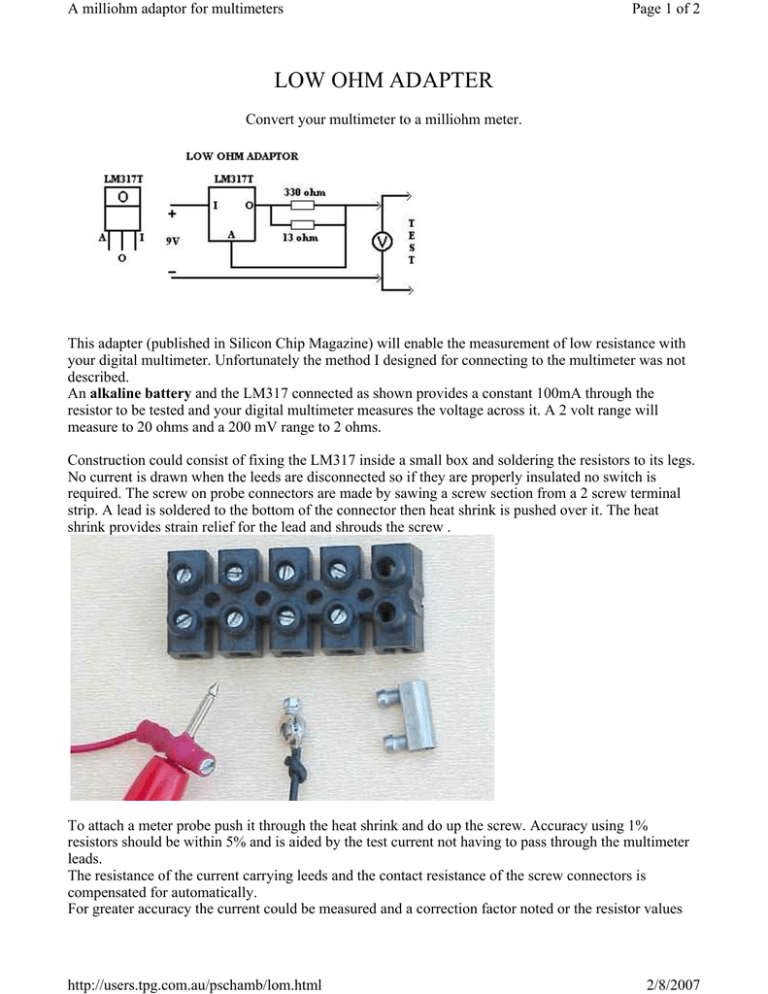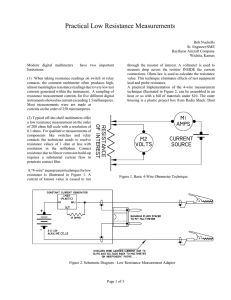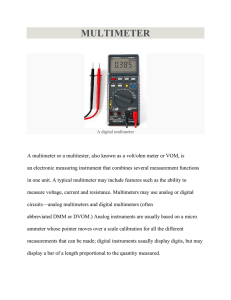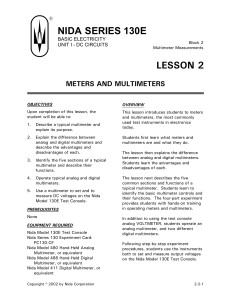low ohm adapter
advertisement

A milliohm adaptor for multimeters Page 1 of 2 LOW OHM ADAPTER Convert your multimeter to a milliohm meter. This adapter (published in Silicon Chip Magazine) will enable the measurement of low resistance with your digital multimeter. Unfortunately the method I designed for connecting to the multimeter was not described. An alkaline battery and the LM317 connected as shown provides a constant 100mA through the resistor to be tested and your digital multimeter measures the voltage across it. A 2 volt range will measure to 20 ohms and a 200 mV range to 2 ohms. Construction could consist of fixing the LM317 inside a small box and soldering the resistors to its legs. No current is drawn when the leeds are disconnected so if they are properly insulated no switch is required. The screw on probe connectors are made by sawing a screw section from a 2 screw terminal strip. A lead is soldered to the bottom of the connector then heat shrink is pushed over it. The heat shrink provides strain relief for the lead and shrouds the screw . To attach a meter probe push it through the heat shrink and do up the screw. Accuracy using 1% resistors should be within 5% and is aided by the test current not having to pass through the multimeter leads. The resistance of the current carrying leeds and the contact resistance of the screw connectors is compensated for automatically. For greater accuracy the current could be measured and a correction factor noted or the resistor values http://users.tpg.com.au/pschamb/lom.html 2/8/2007 A milliohm adaptor for multimeters Page 2 of 2 selected for exactly 100mA. Before using check that the meter will not be harmed by the full battery voltage being impressed on the low voltage ranges you intend to use and be aware that the current and voltage that the adapter outputs could damage susceptible components in a circuit under test. Resistance of a fuse being measured at .016 ohms. BACK TO THE INDEX OF MY OTHER PAGES http://users.tpg.com.au/pschamb/lom.html 2/8/2007




